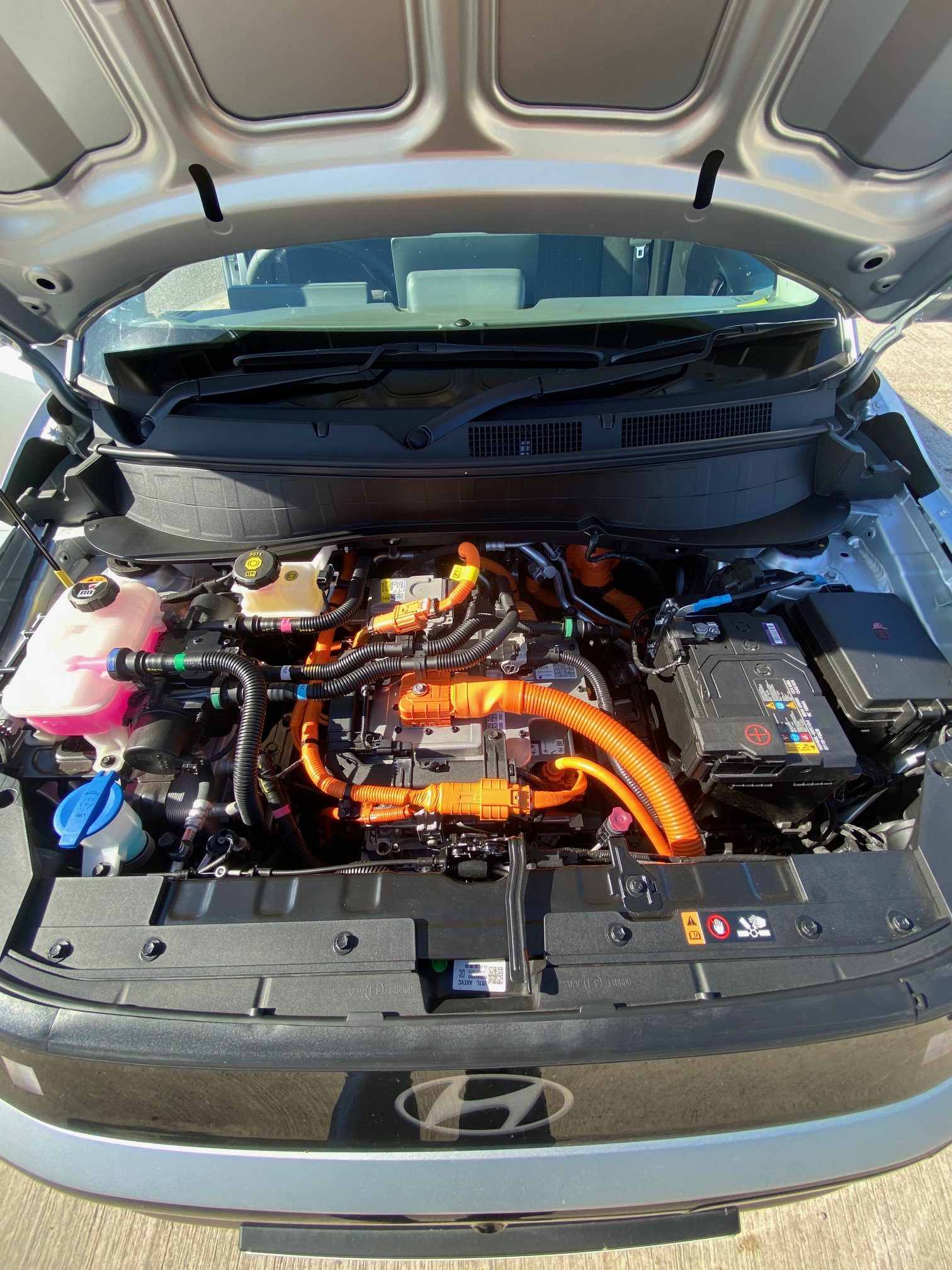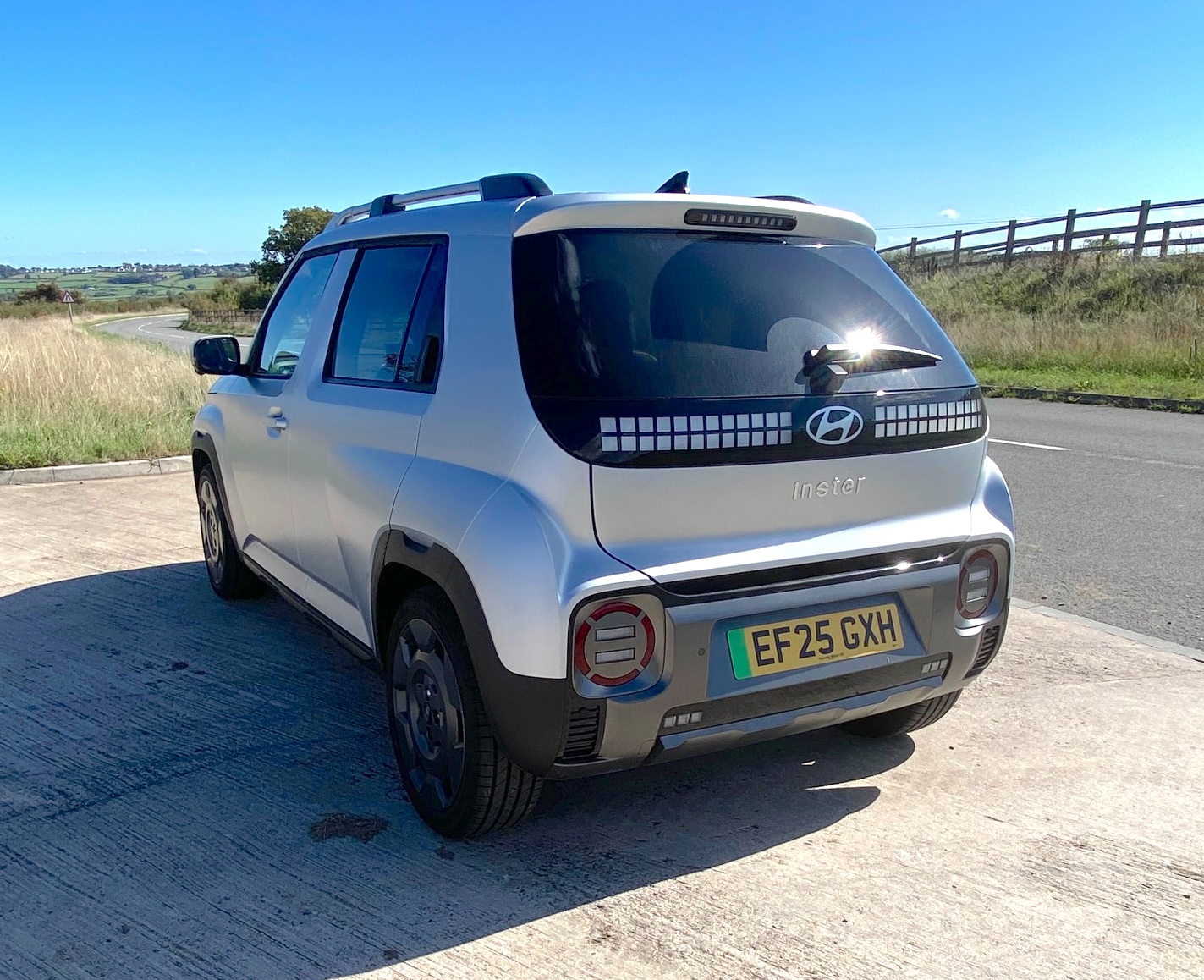If quirkiness won car awards, the Hyundai Inster Cross would silently sweep up a red carpet and win. So says Robin Roberts (and WheelsWithinWales)…
In our week with this highly distinctive city car from the massive Hyundai & Kia group it continuously attracted attention whether moving or parked, including in traffic queues.
I can think of nothing since the Nissan Cube which has elicited such excitement with people pointing, or extending necks to take it all in when sitting beside you or behind in traffic.
Not that they had to stretch very far because the Inster is not a big car but really a city car with a big personality.
Unveiled in late 2021 as the Casper with conventional petrol engine in the Far East it came to Europe in 2024 with a change of name to Inster along with a pure battery powertrain.
As the smallest ever car from Hyundai, the Inster pitched into the burgeoning British market for electric cars destined to be driven in cities and towns by commuters.
Not only has it undercut the majority of European-built small evs, but it has gone further and won world awards against much bigger battery powered cars.
In April, the Hyundai Inster was voted the 2025 World Electric Vehicle and that bloodied the noses of sales staff and executives who were singing the praises of more expensive BEVs.
What’s as surprising as the look of the Inster is the fact that it’s not won its place in automotive history by being cheap. It’s not at nearly £29,000, but it comes within that price bursting with highly desirable technology normally found on more expensive rivals.
A good example are the blind spot cameras set in the door mirrors which activate with the indicators to give a close up field of view in the driver’s instrument pod before turning, thereby protecting cyclists on the nearside or overtaking vehicles.
This first came out on a luxury car costing three times as much, now it’s in a car costing about a quarter of that. How times change along with our expectations.
The modern long life traction battery powers a 115 PS 85.5 kW motor and like all BEVs it gets a simple single-speed transmission but for the Inster there are eco, normal, sport and snow modes to match driver’s needs or conditions. These are selected through a progressive push button on the steering spoke.
Whatever mode is chosen, the power delivery is very smooth, fairly quick and jerk-free. The car’s regeneration can be adjusted to extend range as well and we found this easy and effective to do through the column controls.
The footbrake was very smooth with strong deceleration possible and it produced good feedback on the assistance underfoot while the steering had a tight turning circle for town use and parking, while retaining a pleasantly progressive feel on open roads and it was vibration-free.
Secondary controls through the usual stalks worked well with bright intelligent headlights and very good wash and wiper over the screens. Supplementary switches were placed on the central console and a small panel to the right of the fascia, all easily reached and operated.
Heating and ventilation was straightforward, easily chosen, set and adjusted and included heated seats and steering wheel, ideal for winter driving conditions.
A reasonably sized display panel infront of the driver carried the usual power meter and speedometer with other sliders inset while the infotainment screen in the console carried the rest, instantly responding to touch. It was large and clear.
Oddments space was good for a family car with plenty of bins, shelves and trays throughout, an underfloor compartment to the boot carried the DC and AC charger cables and the boot itself was easy to load and empty with small bags under the foldaway soft cover.
The bootspace was small in four-seat set up but the seatbacks split 50/50 and quickly folded almost flat to more than quadruple total capacity.
Legroom was reasonable in the rear and the absence of a transmission tunnel contributed to the sense of space in the back. Those infront had a fair amount of room but taller users might find the legroom range short although the recline facility was good.
An unusual feature of the driver’s seat was the fact the cubby box between the two front seats and the associated cup-holders were actually part of the seat base and moved accordingly.
The Hyundai Inster Cross was brimming with sensors and cameras to front, back and sides and these were reassuring features although the sightlines when parking or moving were good anyway.
Its dynamic driving tech monitored all the traffic around, kept an adjustable distance from the vehicles infront and recognised and reacted to speed limit signs, well most of the time, but it was caught out on a couple of stretches.
The performance meant the Inster Cross easily kept up with urban, main-road and motorway traffic, had a useful range over 200 miles and we liked the dual charging cables which are not always supplied with BEVs but answer the needs of many owners.
The little car’s ride was generally good except for the worst surfaces and it was always a noisy experience under the wheels.
VERDICT
For many drivers and users I think the Hyundai Inster Cross does a good job, is economical and really stands out on the road.
For: Distinctive look inside & out, agile, reasonable range, well equipped, good for four, safe handling, fair price
Against: Small bootspace, noisy and sometimes bumpy ride, modest performance even in sport mode.
Price: £28,745 Mechanical: 115 PS 85.5 kW motor and 49 kWh battery Max Speed: 93 mph 0 – 62 mph: 10.6sec Range: 217 miles Insurance Group: 23 C02 emissions: Zero Bik rating: 3%, £10FY, £195SR Warranty: 5 years unlimited mileage/ 8 years 100K battery Size: L 3.85 m (12.63 ft), W 1.7 m (5.58 ft), H 1.62 m (5.31 ft) Bootspace: 238 to 1,059 litres (8.40 to 37.40 cu.ft) Kerbweight: 1,400 kg (3,086 lb)FAST FACTS
Model: Hyundai INSTER Cross
© WheelsWithinWales

